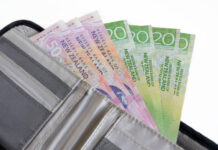Markets
Wednesday’s ‘hawkish’ 75 bps Fed rate hike only reinforced markets’ belief that tightening of global financial conditions still has some way to go. Other central banks including the Norges Bank (+ 50 bps), the Swiss national bank (+75%) or the Bank of England (+0.50%) mostly delivered as expected. Some in the market expected bolder BoE and/or SNB action. However, it for sure wasn’t enough to change the global interest rate dynamic. If they do less now, they probably have to do more next time… This might especially be the case for the Bank of England. The BoE in its statement indicated that at the November meeting, it will evaluate the combined fiscal measures of the new government. BoE member Haskel said that the BoE is in a difficult position with the government supporting demand in the context of a tight labour market and other supply-side constraints. UK interest rate jumped between 13.8 bps (2-y) and 18.6 bps (30-y).
Globally, it initially looked that the overall uptrend in yields could slow post-Fed, but instead it vigorously resumed as soon as US traders joined the fray. Persistent low US jobless claims weren’t the trigger, but confirmed the Fed’s view that the labour market remains tight and that it will take quite a prolonged effort to bring supply and demand in balance. US yields closed between 7.4 bps (2-y) and 18.4 bps!! (10-y) higher. The 10-y yield (3.715%) now decisively broke beyond the 3.50% area opening the way to 4.0%. The move was again driven by an impressive jump in the real yield (10-y + 14.7 bps, to 1.30%). German yields gained between 3.2 bps (30-y) and 9.7 bps (5-y). The 10-y German yield (1.96%) nears the 2.0% barrier. The sharp rise in real yields continues to hurt risk assets. The Eurostoxx lost 1.82%. The Nasdaq declined 1.37%. Both US and European indices are headed for a retest of the June correction low. On the FX market”z, the dollar took a flying start yesterday morning with the DXY setting a minor new cycle high and EUR/USD breaking below the YTD low of 0.9864. However, the USD rally was temporary blocked as the Japanese MOF stepped in to halt the free-fall of the yen. USD/JPY closed at 142 39 compared to an intraday peak of 145.9 before the intervention. USD/JPY sales temporary weighed on the USD overall, but the correction was mostly reversed later (DXY close 111.35 ; EUR/USD 0.9836). EUR/GBP closed marginally higher at 0.874.
Sentiment in Asian stays outright risk-off this morning. Japanese markets are closed. The dollar is again within striking distance of recent cycle peak levels (DXY, EUR/USD). UK GFK consumer confidence this morning was reported at new record low (-49). Later today, the EMU August preliminary PMI’s probably will drop further into contraction territory (composite expected at 48.2). Activity data, especially in Europe, recently had only limited impact on interest rate markets. Inflation prevails. We still don’t fight the trends, both in yields and in the dollar until there is a clear technical sign. EUR/USD dropping below the 0.98 handle might open the way to the 0.96 area.
News Headlines
Belgian consumer confidence plummeted from -11 to -27 in September, dropping below the Covid-lows of -26, to the weakest level since August 1985. Households expressed very serious concerns. The persistent rise in energy prices as winter approaches, galloping inflation and the geopolitical context brought about by the war in Ukraine are weighing heavily on consumer sentiment. The greatest pessimism prevails this month about how the Belgian economy as a whole will evolve over the next twelve months (-49 from -32). Expectations regarding the unemployment rate have also clearly deteriorated (36 from 16; a rise is a deterioration). On a personal front, households’ expectations about their financial situation have never been so negative (-18 from -8).












